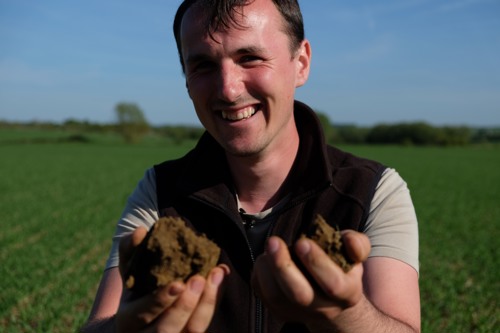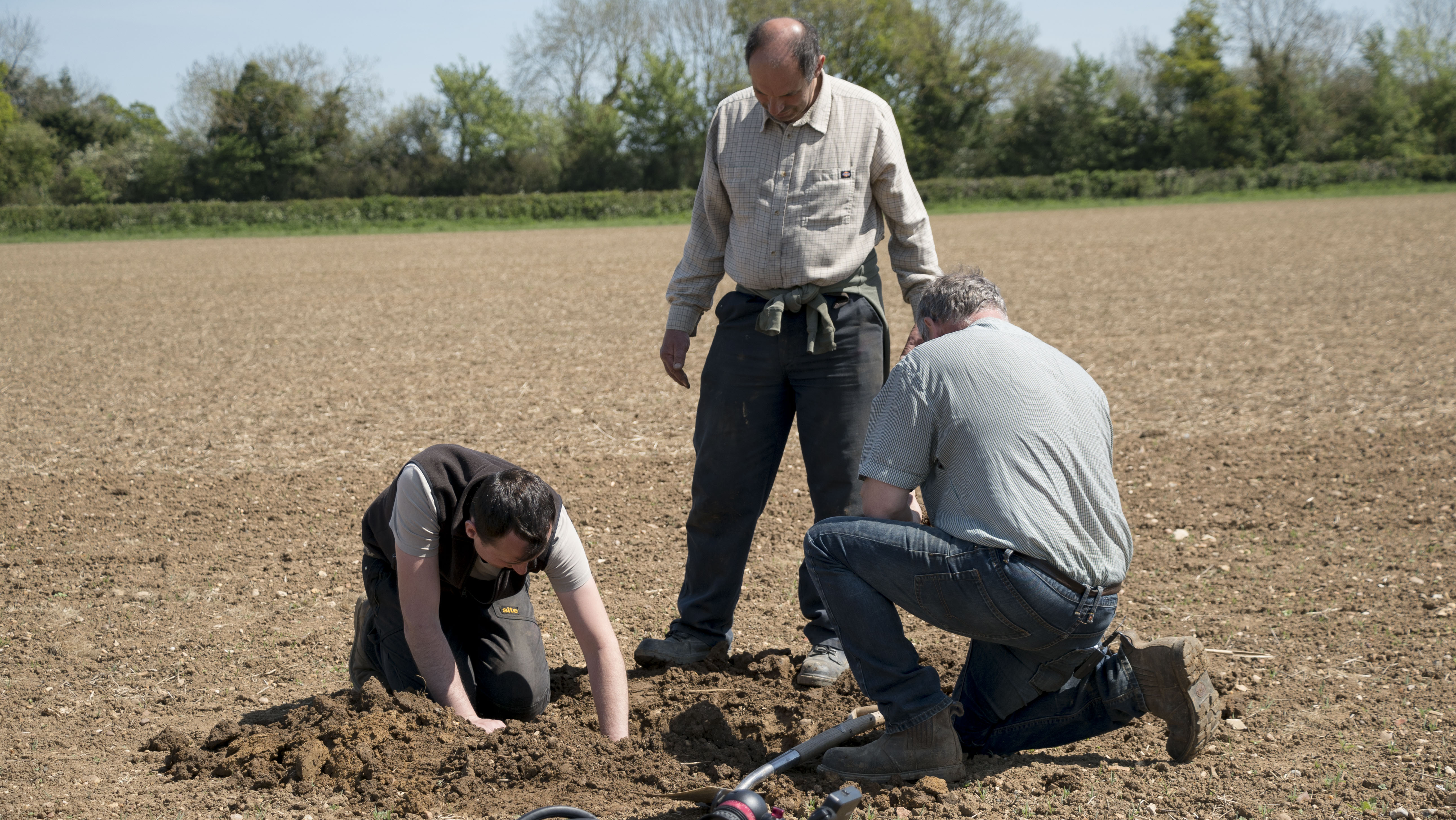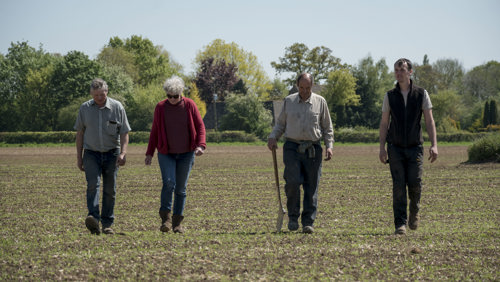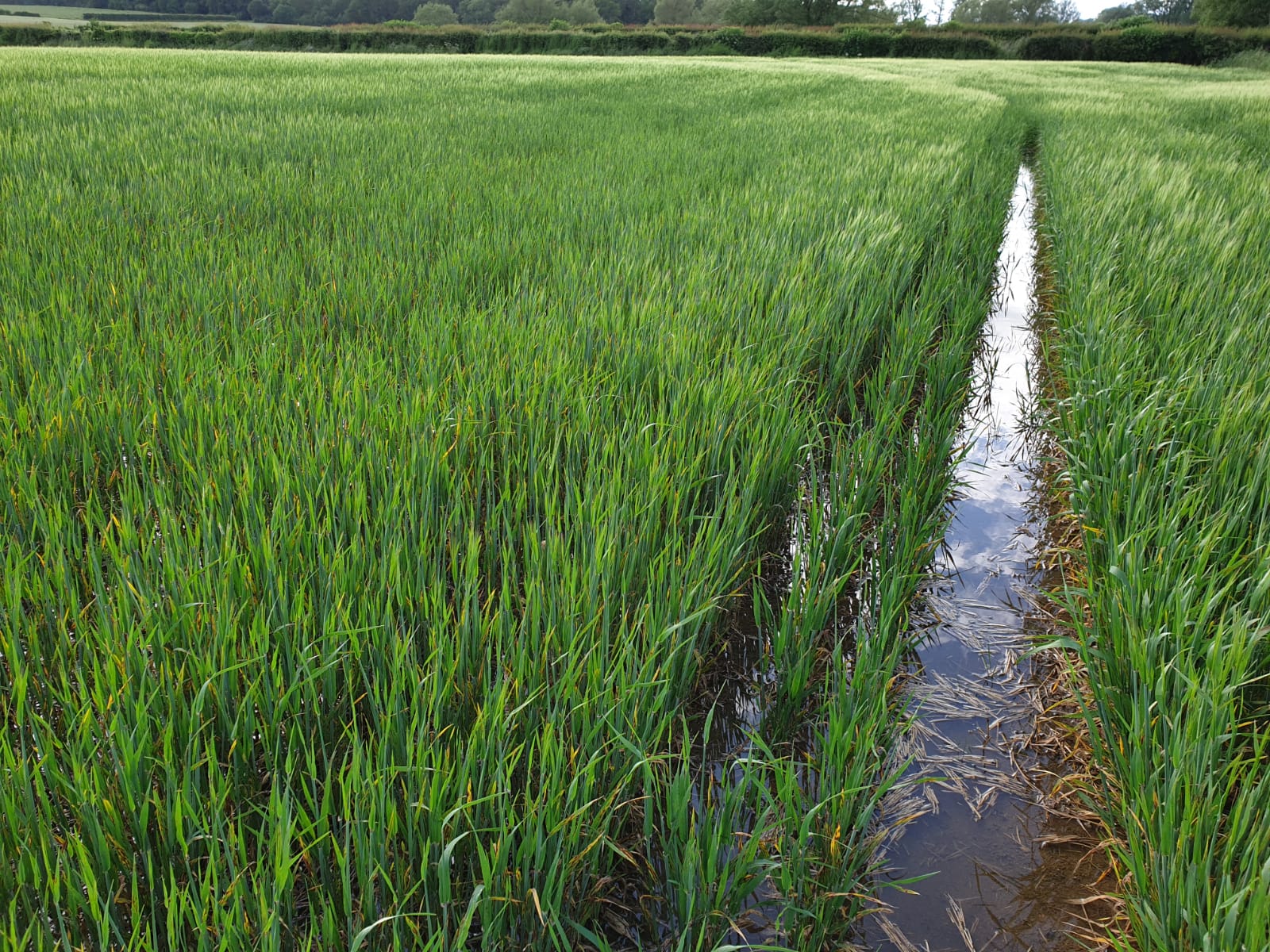
The triallists are exploring whether practicing no tillage and cover crop farming in the Evenlode catchment can reduce the loss of soil and phosphorous to watercourses whilst improving soil health. They would also like to know if it increases farm profitability and efficiency.
The Evenlode is a headwater of the Thames and lies partly within the Cotswolds AONB. Thames Water have set up ‘Smarter Water Catchments’ in the Evenlode to enable water sensitive farming to address the water quality issues in the water. One of the components of this initiative is the current trial.
The trial provides farmers with the ability to explore the challenges and benefits of the No Till and cover crop approach with some of the risk removed.
The trial aims to be run over a period of 5 years to incorporate a longer-term monitoring and understanding of the effects of no till and cover crops on both soil and water health.
Farmers will include either one field split in to two, or two fields side by side. One will be cultivated traditionally (whatever the farm is currently doing) forming a control, whilst the other will be cultivated using No Till methods including the use of cover crops.
The control and trial areas will be compared using a number of different assessments. These include soil health metrics, yield measurements and slug and weed burden. The farmers will be trained in some of the data collection methods to ensure that they can carry out monitoring.
Thames Water are funding machinery costs and cover crop seed provision.
One of the triallists has just harvested his first year no-till crop, with a yield of 10t/ha. Yield results will be gathered for all of the triallists, and cover crops mixes will be sown soon after harvest.
During a wet period this summer one of the farmers reported that the standing water in lower parts of his field was, after just one year of no-till, visibly clearer with a much lower sediment load.
To hear from some of the farmers participating in this field lab, take a look at this short film from Innovative Farmers: Film: farmers exploring no till and cover crops
The three farmers participating in this field lab started with getting their cover crops sown in late Aug/ Sept, with one of the sites re-drilling in October. The group started some initial baseline monitoring in October and did 30 min worm counts, but the bulk of monitoring was done in early January, including:
The farmers will review blackgrass pressure and slug pressure on an annual basis.

These no till practices will be assessed over a number of years, and will take into account crop yield and costs. The sites also have some field-scale monitoring as part of a wider Thames Water Evenlode project; water quality data will be gathered every 2 months with aim of capturing high-rainfall intensity events and observing what is happening as water moves through the catchment.
The group will have a progress meeting at the end of March when cover crops have been destroyed.
The field lab aims to assess whether no till and cover crop practices can improve soil health and reduce river water nutrient loading. The following parameters will be assessed as a result of using no till and cover crops sown using a direct drill, as compared to a control of the usual farm practice:

The farmers will split a field to include half a field of control (their usual practice) and half a field of no till cover crop drilling. If this is not feasible, they will use two adjacent fields; one as a control and one with no till and cover cropping.
These will then have baseline measurements taken on soil health, including: Earthworm counts, soil organic matter, soil structure (VESS), mycorrihzal levels, phosphorus levels (both the amount and the indices), cover crop root lengths, blackgrass and slug populations. The baseline measurements will then be repeated throughout the trial to track changes in response to no till and cover crops.
Some measurements will be taken more frequently than others. The cover crop roots will be measured to track growth, blackgrass and slugs during spring and / or summer when they are likely to be at their peak.
Soil organic matter and mycorrhizal levels will be monitored again towards the end of the 5 year period, as these are less likely to change rapidly and can be costly to carry out.
Farmers are also deciding how to record cost data to see if savings have been made e.g. on fertilisers and fuel.
At the next meeting later in October, these methods will be verified and the farmers will be trained in taking some of them to ensure that they can carry out monitoring. Researchers will be on hand to help when needed with monitoring later in the trial. In October, samples will also be taken for baseline mycorrizhal level testing.

Researchers have suggested that when there are heavy rainfall events they may be able to travel to the farms to assess the soil movement and river sediment loading.
To help with identifying soil movement and erosion, posts will be put in the middle and at the bottom of fields near streams. This method is still being developed and thought through, and will be discussed again in the next meeting with farmers for practicability.
Farmer A: I am interested in the soil health as the field I intend to do is a Costwold Brash, and can cap in very wet weather, stopping growth and affecting yield. I think the no till practice will help open the soil up to encourage earth worms.
Farmer B: Overall, I would like to increase the soil health, including possible improvements to soil organic matter and nutrient recycling to reduce the amount of applied fertiliser. Within this, I would also like to monitor slug pressure/numbers between my standard practice and the no till and cover cropping practice. As we need to apply phosphate to the soil, I want to look at alternative sources of phosphate that reduce risk to water but are available to plant. For carrying out the no till operations, I want to compare the disc drill and tine drill (which is the current farm drill), as well as identify the best cover crop mixes for my heavy clay soil.
Farmer C: I am interested in how no till and cover crops will fare against blackgrass and whether they will have an effect on controlling it. I'd also like to know if there is an increase of natural increase of P+K in soil from the cover crops, and whether the practices have a positive or negative effect on yield.
The Evenlode catchment lies to the west of Oxford and is in the Thames river basin, partly within the Cotswolds AONB. The main river is a headwater of the River Thames flowing from Moreton-in-Marsh to Eynsham over a distance of more than 75 km. It drains an area of nearly 30,000 ha and is managed as a number of river waterbodies. Thames Water have set up ‘Smarter Water Catchments’ in the Evenlode to enable water sensitive farming. One of the components of this initiative is the current trial.
The trial aims to be run over a period of 5 years to incorporate a longer-term monitoring and understanding of the effects of no till and cover crops on both soil and water health.
September 2018
October 2018
December 2018
January 2019
February 2019
March 2019
September 2019
October 2019

Atkins
Epsom & London
Jay is an environmental scientist working in the field of water and environmental management. This involves everything from in-river water quality and ecological monitoring, interpretation and analysis, to designing and implementing monitoring solutions in support of catchment management projects. His current technical focus is on water quality monitoring solutions to understand catchment processes and the benefits of farm/land management interventions.
